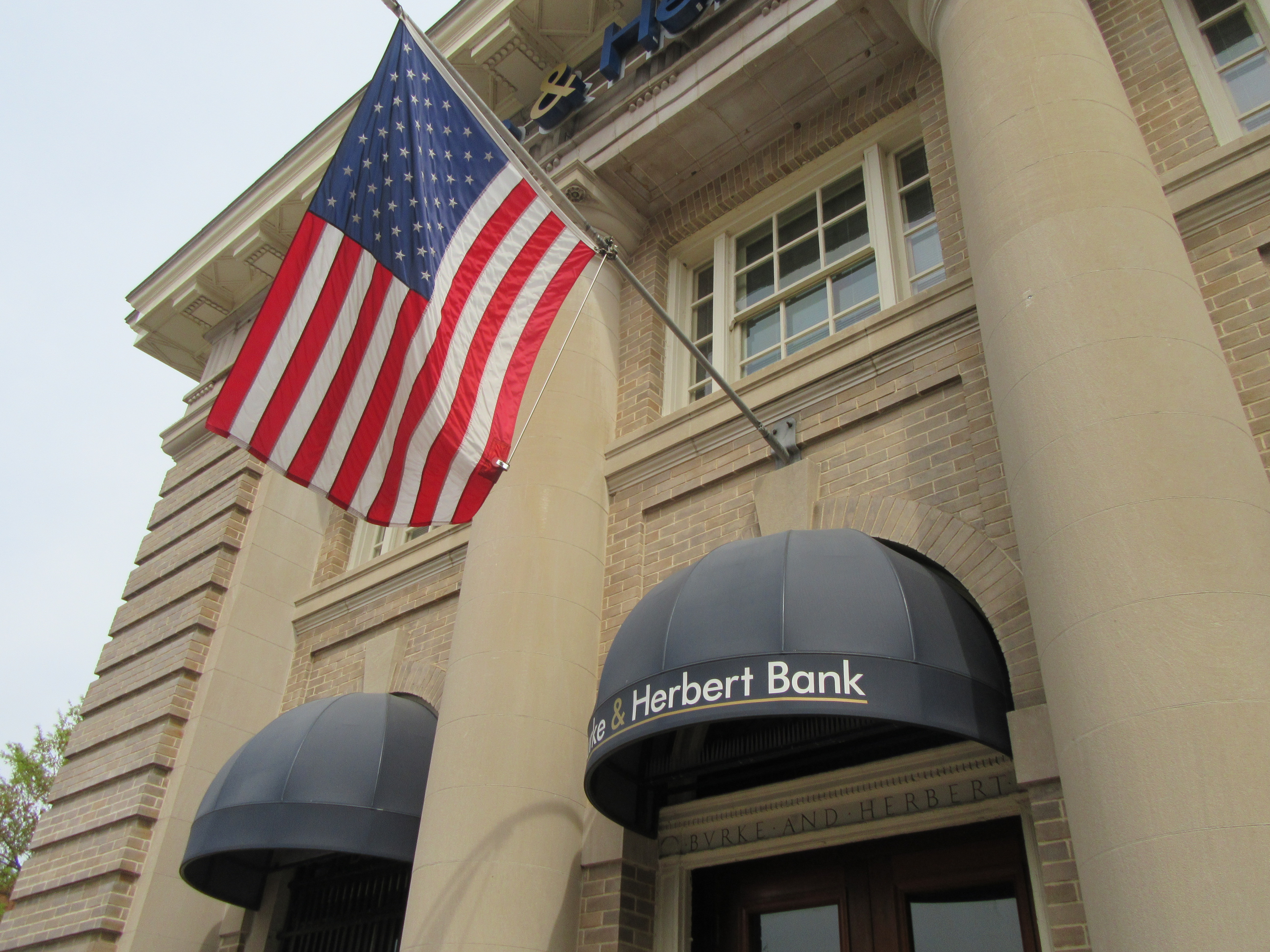Thursday, April 11, 2024
Burke and Herbert Bank has survived the Union Army’s Civil War occupation, the 1930s Great Depression, toughened federal regulations, the computer revolution, superbank-merger mania, economic downturns, economic upturns, the coronavirus pandemic and more.
In 1852, John Woolfolk Burke, 27, and Arthur Herbert, 23, opened the Burke and Herbert Banking and Exchange Office in Alexandria. That year, Franklin Pierce became the U.S. president, the Studebaker Brothers Wagon Company was established and the book Uncle Tom’s Cabin came out. “Downtown” Alexandria, today called “Old Town,” was a bustling port and mix of warehouses and modest shops. Gas lights and running water had just arrived.
On April 7, 2024, E. Hunt Burke, the bank’s chairman and great-great-grandson of founder John Burke, walked through the bank’s history and philosophy with 50 engaged attendees at a talk sponsored by the Mount Vernon Regional Historical Society at the Sherwood Regional Library. Hunt started working at the bank at age 13 reviewing cleared checks to see if they were correctly endorsed, literally working in a smoke-filled room where 12 women constantly puffed away. Burke is the fifth generation of Burkes to work there. His nephew, Taylor Burke IV, a lending officer, is the sixth.
Downhome Trust
“We opened on a handshake,” Burke told the audience. “We ran it that way for 81 years. A handshake goes a long way.” He gave the example of his father, C.S. Taylor Burke Jr., who grew up on Prince Street, making a home loan to a Pentagon colonel. “My dad trusted the military,” he explained, and practically approved a loan on the spot.
The website states the bank’s purpose: “To serve and inspire people to achieve their financial goals and realize their dreams.” It lists as core values, “inspire trust, respect one another, act with integrity, embrace our differences.”
Now in its 172nd year, Burke and Herbert is the oldest, continuous bank in Virginia with its original name. It has more than $3.6 billion in assets, 25 branches and over 400 employees who represent 41 different nationalities. It offers traditional checking, savings and lending, plus digital banking, business management financing, wealth management, retirement planning and other services.
The neoclassical building at the corner of King and South Fairfax Streets, home to the main offices and built in 1905, is based on London’s Westminster Bank, Burke explained, a style designed to convey stability, financial soundness and responsible capitalism. Bank branches in Alexandria and Fairfax, Arlington and Prince William counties, plus a new one in Richmond, all are different architectural styles, basically whatever building the bank bought.
A Historic Move
In August, Burke and Herbert Bank took an unprecedented step and announced a merger with Summit Community Bank, headquartered in Moorefield, West Virginia. The combined banks will have over 75 branches in Virginia, West Virginia, Kentucky, Maryland and Delaware. Burke attributed the merger to the fact that his bank has been “so safe so many years. It’s a beautiful merger,” he commented. The announcement press release called it a “merger of equals,” that “is expected to result in a combined earnings per share of approximately $7.90 in the first full year of combined operations (assuming fully realized cost savings).” The merged bank will retain the Burke and Herbert name.
Survival Secret
Many locals view Burke and Herbert as a stable, friendly, some say, “old fashioned,” community institution because “we don’t do goofy things,” Burke explained, citing the 2023 Silicon Valley bank crisis. He continued, “Banks fail because they chase the easy money. We’ve always been very conservative. We have a nice following. We are community oriented.”
Glenn Fatzinger, president of the historical society, agreed. “It is truly a family bank and there are not many family banks today. For many years, they loaned money to churches when no one else would. The bank funded many economic development projects that changed both Old Town and Mount Vernon over the years from the 1960s to today.”
Why Be a Banker?
Given his lineage, Burke apparently has a “banking gene,” but he’s a banker not because he was born into it, but because he loves it. “It’s fun to get to know everyone in town. It’s great to be part of a community and have a place in the community.”
In his street-level office with the doors open to King Street and pedestrian chatter on a balmy April afternoon, with his beagle, Rose, nearby, he affirmed that devotion to banking and his community.
Avian Advertising, Runyon the Parrot
Hunt Burke’s father, C.S. Taylor Burke Jr., was the bank’s president from 1963 to 1992, a legend around town. He had “an unusual personality for a banker,” Hunt commented, citing his father’s quirky, fun-loving streak. “He made banking fun.”
One day, his father came home with a lime-green parrot perched on his shoulder, a bird he bought at G.C. Murphy’s Department Store. The female parrot, named Runyon, became a popular image for the bank.
C.S. Taylor Burke testified before the U.S. House of Representatives Banking Committee with Runyon on his shoulder. “I don’t know if he got any votes,” Hunt quipped. The pair made NBC television’s “Saturday Night Live” comedy show. The host asked, “Would you trust your money with this man?”
Runyon “was worth millions in free advertising,” Burke touted. Runyon’s replacement is Harvie, who’s now 40 and lives with Hunt’s sister. Parrots can live for 80 years, Burke noted, enduring like the bank.
